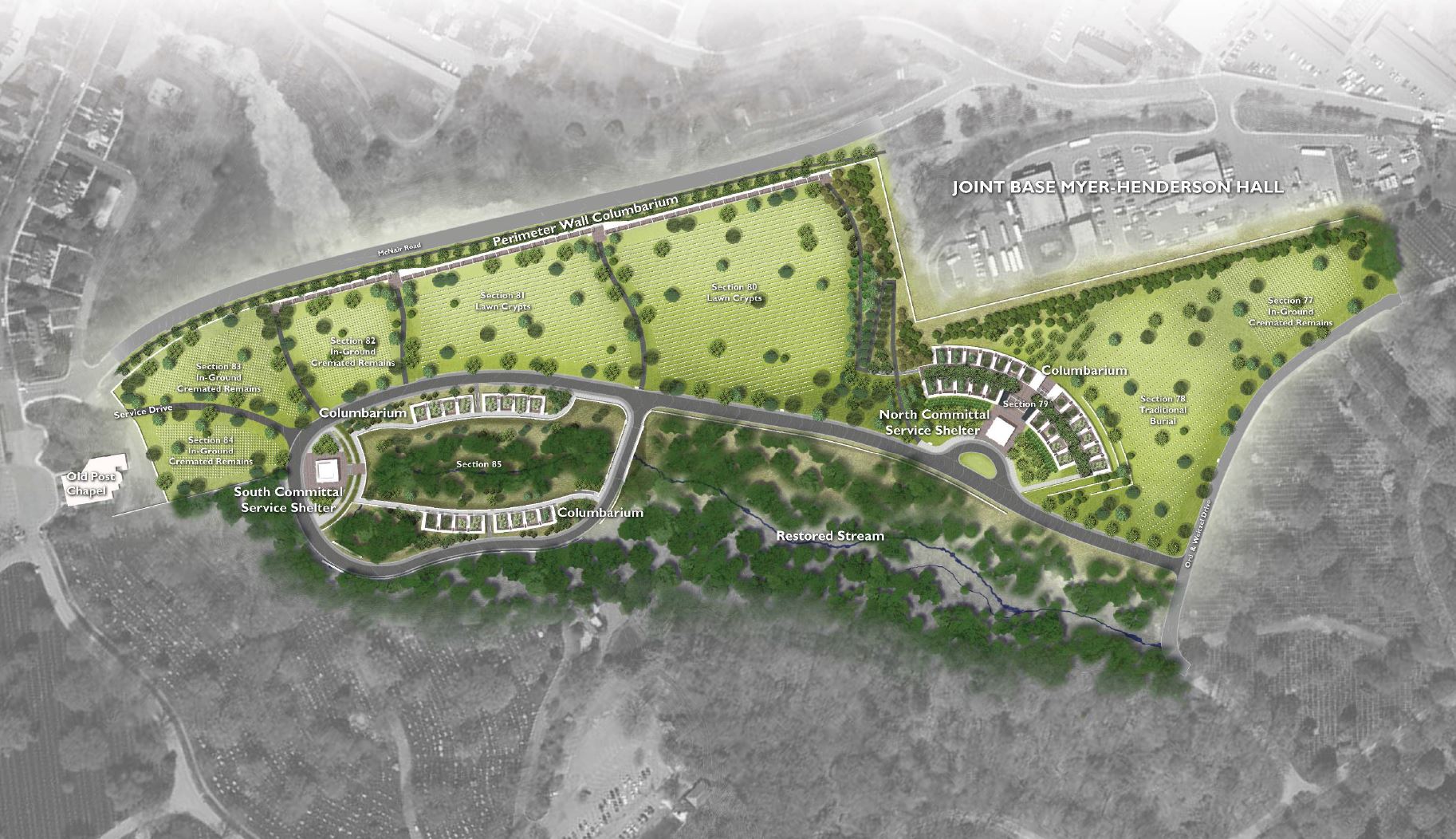
The Arlington National Cemetery Millennium Project is an $85 million initiative to expand the revered burial grounds by 27 acres for an additional 56,000 interments, while also preserving the site’s integrity and tranquility. Jacobs, the cemetery planner and designer, architect and landscape architect designer of record and the engineering designer of record, teamed up with structural engineer Ammann & Whitney (now part of Louis Berger), general contractor Forrester Construction, historic architecture/architectural design consultation, Beyer Blinder Belle Architects & Planners, landscape designer Sasaki Associates, stream restoration and wetland consultant Wetland Studies and Solutions Inc., and surveyor Rice Associates to bring the five-year project to life. The expansion balanced the urgent need for greater capacity with environmental concerns including water management, erosion control, native flora, and viewsheds.
Cemeteries are familiar to all of us in their programmatic elements like columbaria, crypts, and gravesites. Iconography, architecture, and liturgy come together to comfort the bereaved and mark a life transition. But there is still room for innovation on behalf of our hallowed rituals.
The new outdoor columbaria at Arlington National Cemetery arcs gently in plan along a central corridor and is anchored by a cast in-place-concrete and cedar-clad committal shelter at the center for pre-burial memorial ceremonies. The columbarium is, by definition, a series of niches, and this one is also a series of outdoor rooms. In the context of the larger, 27-acre addition, it is a sculptural counterpoint to wide open spaces associated with this historic cemetery, in operation since the Civil War.
“When you think of Arlington, you think of white tombstones marching along in a beautiful park-like setting. This project involved reconnecting a stream to its floodplain and the natural contour of the site,” says Stephen Wakeman, AIA, Design Principal for Jacobs, and a member of the Board of Directors for AIA Virginia. “It’s a respectful ground where we bury our soldiers. It’s landscape architecture; it’s architecture-as-object; and it’s a restoration project centered on a natural stream. “But, all that said, the design brief was simple: fit a series of columbaria into nature and do it in a quiet way.”
The next phase of the cemetery’s expansion, slated for completion by 2025, is a 37-acre expansion to the south of Arlington National Cemetery on the site of the former Navy Annex building. Learn more about the columbarium at jacobs.com.
Site Plan image courtesy of Jacobs.
About the Project Team
Owner: Arlington National Cemetery, U.S. Department of the Army
Design and Construction Manager: U.S. Army Corps of Engineers, Norfolk District
Joint Venture: Jacobs/Ammann & Whitney, JV
Jacobs: Cemetery Planning and Design
Designer of Record for Architecture
Designer of Record for Landscape Architecture
Designer of Record for Civil Engineering
Designer of Record for Electrical Engineering
Amman & Whitney (Louis Berger): Designer of Record for Structural Engineering
Landscape Designer: Sasaki Associates Inc.
Historic Architecture/Architectural Design Consultation: Beyer Blinder Belle Architects & Planners
Stream Restoration and Wetland Consultant: Wetland Studies and Solutions Inc.
Surveys: Rice Associates
General Contractor: Forrester Construction
About the Author
William Richards is a writer and editorial consultant based in Washington, D.C. From 2007 to 2011, he was the Editor-in-Chief of Inform Magazine.
